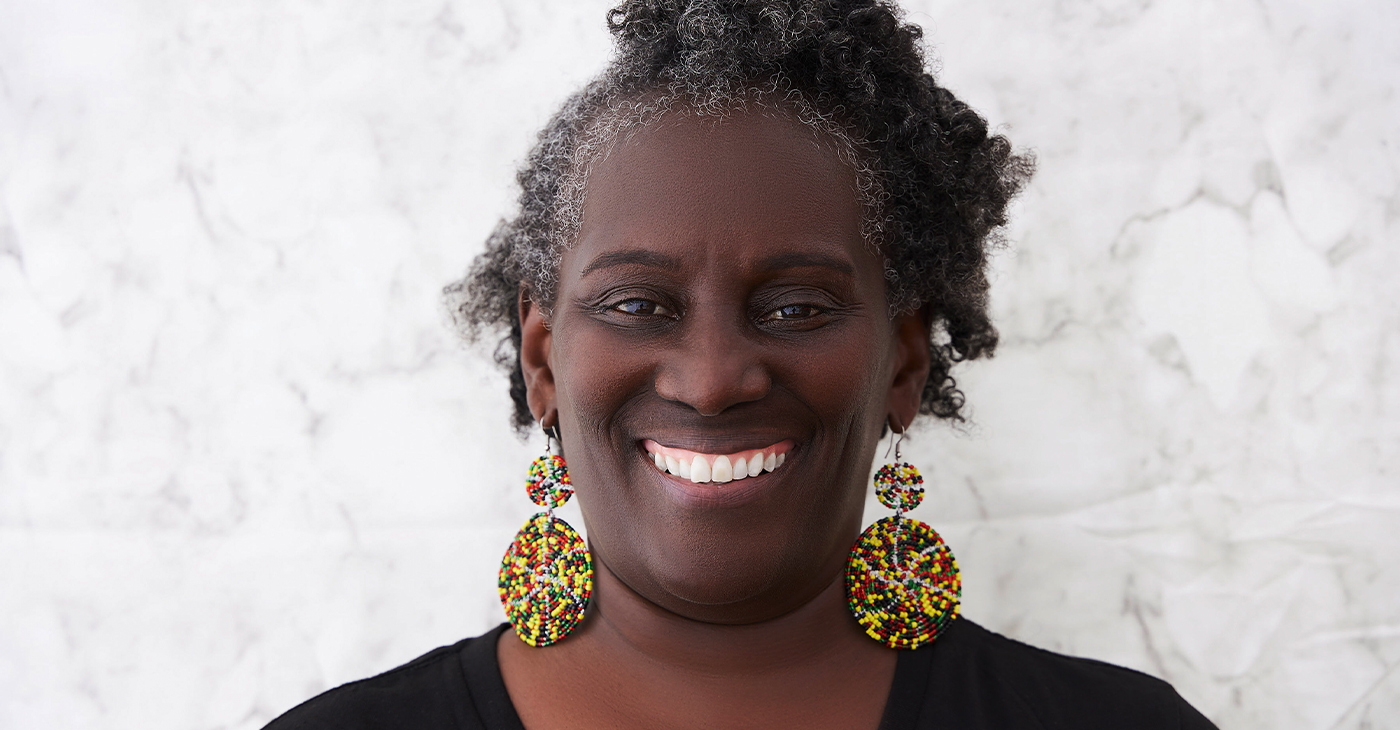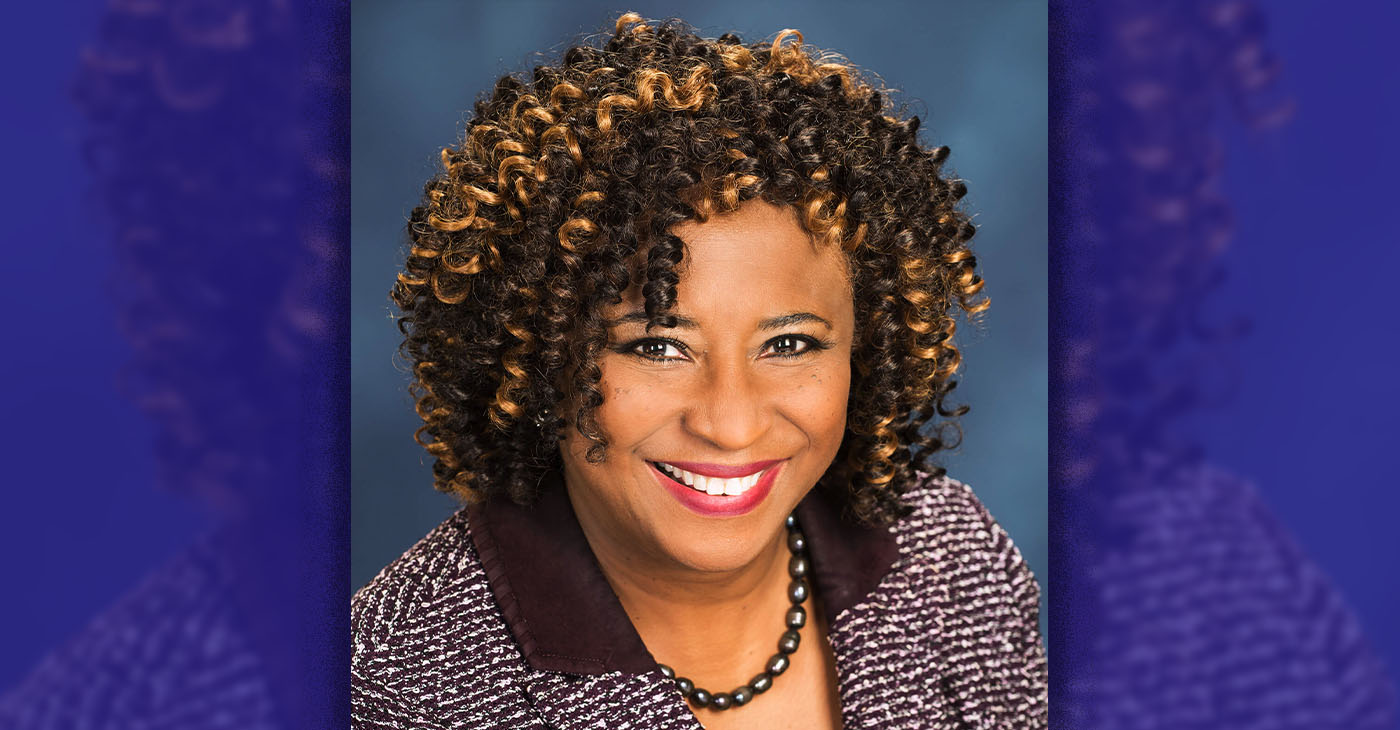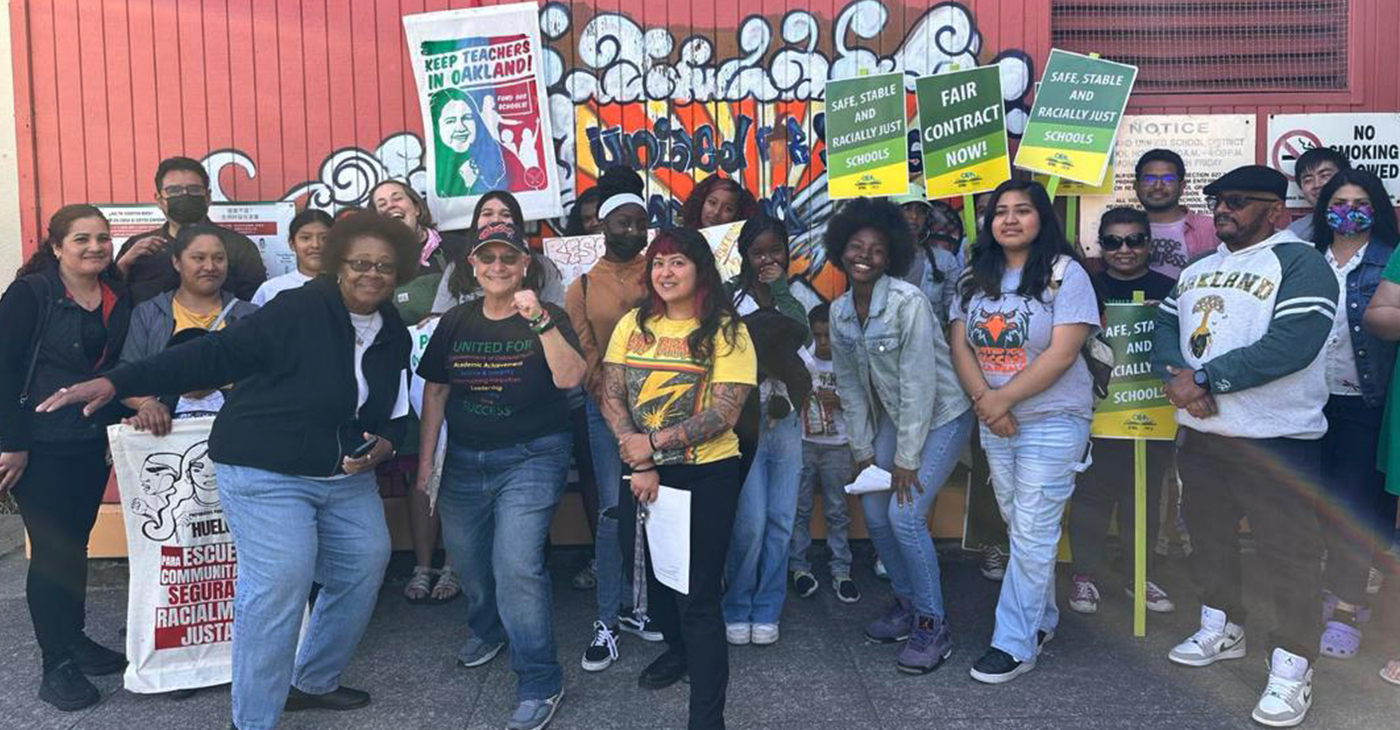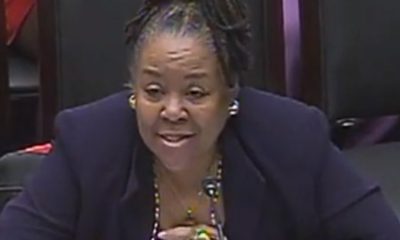Uncategorized
The Transatlantic Slave Trade: 500 Years Later the Diaspora Still Suffers
NNPA NEWSWIRE — “The fact that slavery was underway for a century in South America before introduction in North America is not widely taught nor commonly understood,” said Felicia Davis of the HBCU Green Fund.
The National Newspaper Publishers Association (NNPA) has launched a global news feature series on the history, contemporary realities and implications of the transatlantic slave trade.
(Read the entire series: Part 1, Part 2, Part 3, Part 4, Part 5, Part 6, Part 7, Part 8, Part 9, Part 10, Part 11)
By Stacy M. Brown, NNPA Newswire Correspondent
@StacyBrownMedia
“Impossible is just a big word thrown around by small men who find it easier to live in the world they’ve been given than to explore the power they have to change it. Impossible is not a fact. It’s an opinion. Impossible is not a declaration. It’s a dare. Impossible is potential. Impossible is temporary. Impossible is nothing.” — Muhammad Ali
“We need to exert ourselves that much more, and break out of the vicious cycle of dependence imposed on us by the financially powerful: those in command of immense market power and those who dare to fashion the world in their own image.” — Nelson Mandela
The most enduring consequences of the migration for the migrants themselves and for the receiving communities, were the development of racism and the corresponding emergence and sustenance of an African-American community, with particular cultural manifestations, attitudes, and expressions.
The legacy is reflected in music and art, with a significant influence on religion, cuisine, and language, according to Paul E. Lovejoy, a distinguished research professor and Canada Research Chair in African Diaspora History at York University in Toronto.
“The cultural and religious impact of this African immigration shows that migrations involve more than people; they also involve the culture of those people,” Lovejoy said in a recent post about the creation of the African diaspora.
American culture is not European or African but its own form, created in a political and economic context of inequality and oppression in which diverse ethnic and cultural influences both European and African – and in some contexts, Native American – can be discerned, Lovejoy said.
“Undoubtedly, the transatlantic slave trade was the defining migration that shaped the African Diaspora. It did so through the people it forced to migrate, and especially the women who were to give birth to the children who formed the new African-American population,” he said.
These women included many who can be identified as Igbo or Ibibio but almost none who were Yoruba, Fon, or Hausa.
Bantu women, from matrilineal societies, also constituted a considerable portion of the African immigrants, and it appears that females from Sierra Leone and other parts of the Upper Guinea Coast were also well represented, Lovejoy said.
“These were the women who gave birth to African-American culture and society,” he said.
After many rang in 2019 with celebratory parties and gatherings, there were still others who solemnly recalled the beginning of the transatlantic slave trade that started 400 years ago – 500 years, depending upon the region.
For Africans throughout the diaspora, their struggle not only traces back 400 or 500 years, but it continued and was underscored as recently as 135 years ago when the infamous Berlin Conference was held.
The conference led to the so-called “Scramble for Africa” by European powers who successfully split the continent into 53 countries, assuring a division that remains today.
“There isn’t a single thing that was more damaging to Africa than the Berlin Conference,” said African Union Ambassador Dr. Arikana Chihombori-Quao.
“Africans weren’t even invited to the conference,” she said.
At the conference, which took place over three months in Brazil beginning in February 1884 and attended by 13 European nations and the United Sates, ground rules were established to split Africa.
“Africans still are suffering the consequences,” the ambassador said.
Said John W. Ashe, the president of the United Nations General Assembly:
“The Transatlantic slave trade … for 400 years deprived Africa of its lifeblood for centuries and transformed the world forever.”
There’s no question that legacies of the slave trade persist today in most of the countries Africans were taken to, said Ayo Sopitan, founder of Pendulum Technologies in Houston, Texas.
“I have been thinking about how Africans and the diaspora need to get together – through proxies in the persons of recognized leaders – and have a conversation about the past, the role that African collaborators played and how we can unite as a people. Then, and only then will we be able to excel as a people,” Sopitan said.
“I have sat at lectures by Henry Gates and learned about blacks in the Americas. The conclusion is that wherever we are, blacks are usually at the bottom of the totem pole. This does not have to continue,” he said.
The transatlantic slave trade was an oceanic trade in African men, women, and children which lasted from the mid-sixteenth century until the 1860s.
European traders loaded African captives at dozens of points on the African coast, from Senegambia to Angola and round the Cape to Mozambique.
The great majority of captives were collected from West and Central Africa and from Angola, according to the United Nations Educational, Scientific, and Cultural Organization – UNESCO.
The trade was initiated by the Portuguese and Spanish especially after the settlement of sugar plantations in the Americas, UNESCO officials noted in a 2018 web presentation titled, “Slavery and Remembrance.”
European planters spread sugar, cultivated by enslaved Africans on plantations in Brazil, and later Barbados, throughout the Caribbean.
In time, planters sought to grow other profitable crops, such as tobacco, rice, coffee, cocoa, and cotton, with European indentured laborers as well as African and Indian slave laborers.
Nearly 70 percent of all African laborers in the Americas worked on plantations that grew sugar cane and produced sugar, rum, molasses, and other byproducts for export to Europe, North America, and elsewhere in the Atlantic world, according to UNESCO.
Before the first Africans arrived in British North America in 1619, more than half a million African captives had already been transported and enslaved in Brazil.
By the end of the nineteenth century, that number had risen to more than 4 million.
Northern European powers soon followed Portugal and Spain into the transatlantic slave trade.
The majority of African captives were carried by the Portuguese, Brazilians, the British, French, and Dutch. British slave traders alone transported 3.5 million Africans to the Americas, UNESCO reported.
The transatlantic slave trade was complex and varied considerably over time and place, but it had far-reaching and lasting consequences for much of Europe, Africa, the Americas, and Asia.
The profits gained by Americans and Europeans from the slave trade and slavery made possible the development of economic and political growth in major regions of the Americas and Europe.
Europeans used various methods to organize the Atlantic trade.
Spain licensed (by Asiento agreements) other nations to supply its Spanish American and Caribbean colonies with African captives. France, the Netherlands, and England initially used monopoly companies.
In time, the demand for African laborers in the Americas was met by more open trade which allowed other merchants to engage in the trade with Africans.
Thus, formidable private trading companies emerged, such as Britain’s Royal African Company (1660–1752) and the Dutch West India Company of the Netherlands (1602–1792), according to UNESCO.
The profits generated from the Atlantic trade economically and politically transformed Liverpool and Bristol in England, Nantes and Bordeaux in France, Lisbon in Portugal, Rio de Janeiro and Salvador de Bahia in Brazil, and Newport, Rhode Island, in the United States.
Each port developed links to a wide hinterland for local and international goods in Asia and capital to sustain the trade in African captives.
European merchants and ship captains – followed later by those from Brazil and North America – packed their sailing vessels with local goods and commodities from Asia to trade on the African coast.
Enslaved Africans, their often violent capture and enslavement out of sight of the European general public, were exchanged for iron bars and textiles, luxury goods, cowrie shells, liquor, firearms, and other products that varied region by region over time.
Much of the wealth generated by the transatlantic slave trade supported the creation of industries and institutions in modern North America and Europe.
To an equal degree, profits from slave trading and slave-generated products funded the creation of fine art, decorative arts, and architecture that continues to inform aesthetics today, UNESCO officials said.
“European countries – Portuguese, English, French, and Spanish – are most complicit in the transatlantic slave trade. This pernicious form of slavery was driven by European capitalistic countries seeking to expand their nation-states and empires,” said Dr. Jonathan Chism, assistant professor of history and a fellow with the Center for Critical Race Studies at the University of Houston Downtown.
The hurt continues today.
“The fact that slavery was underway for a century in South America before introduction in North America is not widely taught nor commonly understood,” said Felicia Davis of the HBCU Green Fund.
“It is a powerful historical fact missing from our understanding of slavery, its magnitude and global impact. Knowledge that slavery was underway for a century [before it began in North America] provides deep insight into how enslaved Africans adapted,” Davis said.
She continued:
“Far beyond the horrific seasoning description, clearly generations had been born into slavery long before introduction in North America. It deepens the understanding of how vast majorities could be oppressed in such an extreme manner for such a long period of time,” Davis said.
“It is also a testament to the strength and drive among people of African descent to live free.”
Arts and Culture
Rise East Project: Part 3
Between 1990 and 2020, Oakland lost nearly half of its Black population due to economic and social forces. East Oakland, once a middle-class community, is now home to mostly Black families living in poverty.

The Black Cultural Zone’s Pivotal Role in Rebuilding Oakland’s Black Community
By Tanya Dennis
Between 1990 and 2020, Oakland lost nearly half of its Black population due to economic and social forces. East Oakland, once a middle-class community, is now home to mostly Black families living in poverty.
In 2021, 314 Oakland residents died from COVID-19. More than 100 of them, or about 33.8%, were Black, a high rate of death as Blacks constitute only 22.8% of Oakland’s population.
This troubling fact did not go unnoticed by City and County agencies, and the public-at-large, ultimately leading to the development of several community organizations determined to combat what many deemed an existential threat to Oakland’s African American residents.
Eastside Arts Alliance had already proposed that a Black Cultural Zone be established in Deep East Oakland in 2010, but 2020’s COVID-19 pandemic galvanized the community.
Demanding Black legacy preservation, the Black Cultural Zone (BCZ) called for East Oakland to be made an “unapologetically Black” business, commercial, economic development community.
Established initially as a welcoming space for Black art and culture, BCZ emerged into a a community development collective, and acquired the Eastmont police substation in Eastmont Town Center from the City of Oakland in 2020.
Once there, BCZ immediately began combating the COVID-19 pandemic with drive-thru PPE distribution and food giveaways. BCZ’s Akoma Market program allowed businesses to sell their products and wares safely in a COVID-compliant space during the COVID-19 shutdown.
Currently, Akoma Market is operated twice a month at 73rd and Foothill Boulevard and Akoma vendors ‘pop up’ throughout the state at festivals and community-centered events like health fairs.
“Before BCZ existed, East Oakland was a very depressing place to live,” said Ari Curry, BCZ’s chief experience officer and a resident of East Oakland. “There was a sense of hopelessness and not being seen. BCZ allows us to be seen by bringing in the best of our culture and positive change into some of our most depressed areas.”
The culture zone innovates, incubates, informs, and elevates the Black community and centers it in arts and culture, Curry went on.
“With the mission to center ourselves unapologetically in arts, culture, and economics, BCZ allows us to design, resource, and build on collective power within our community for transformation,” Curry concluded.
As a part of Oakland Thrives, another community collective, BCZ began working to secure $100 million to develop a ‘40 by 40’ block area that runs from Seminary Avenue to the Oakland-San Leandro border and from MacArthur Boulevard to the Bay.
The project would come to be known as Rise East.
Carolyn Johnson, CEO of BCZ says, “Our mission is to build a vibrant legacy where we thrive economically, anchored in Black art and commerce. The power to do this is being realized with the Rise East Project.
“With collective power, we are pushing for good health and self-determination, which is true freedom,” Johnson says. “BCZ’s purpose is to innovate, to change something already established; to incubate, optimizing growth and development, and boost businesses’ economic growth with our programs; we inform as we serve as a trusted source of information for resources to help people; and most important, we elevate, promoting and boosting Black folks up higher with the services we deliver with excellence.
“Rise East powers our work in economics, Black health, education, and power building. Rise East is the way to get people to focus on what BCZ has been doing. The funding for the 40 by 40 Rise East project is funding the Black Culture Zone,” Johnson said.
Alameda County
Help Protect D.A. Pamela Price’s Victory
Alameda County District Attorney Pamela Price is asking supporters of the justice reform agenda that led her to victory last November to come to a Town Hall on public safety at Montclair Presbyterian Church on July 27.

By Post Staff
Alameda County District Attorney Pamela Price is asking supporters of the justice reform agenda that led her to victory last November to come to a Town Hall on public safety at Montclair Presbyterian Church on July 27.
Price is facing a possible recall election just six months into her term by civic and business interests, some of whom will be at the in-person meeting from 6:00-9:00 p.m. at 5701 Thornhill Dr. in Oakland.
“We know that opponents of criminal justice reform plan to attend this meeting and use it as a forum against the policies that Alameda County voters mandated DA Price to deliver. We cannot let them succeed,” her campaign team’s email appeal said.
“That’s why I’m asking you to join us at the town hall,” the email continued. “We need to show up in force and make sure that our voices are heard.”
Price’s campaign is also seeking donations to fight the effort to have her recalled.
Her history-making election as the first African American woman to hold the office had been a surprise to insiders who had expected that Terry Wiley, who served as assistant district attorney under outgoing D.A. Nancy O’Malley, would win.
Price campaigned as a progressive, making it clear to voters that she wanted to curb both pretrial detention and life-without-parole sentences among other things. She won, taking 53% of the vote.
Almost immediately, Price was challenged by some media outlets as well as business and civic groups who alleged, as she began to fulfill those campaign promises, that she was soft on crime.
On July 11, the recall committee called Save Alameda for Everyone (S.A.F.E.) filed paperwork with the county elections office to begin raising money for the next step toward Price’s ouster: gathering signatures of at least 10% of the electorate.
S.A.F.E. has its work cut out for them, but Price needs to be prepared to fight them to keep her office.
In a separate sponsored letter to voters, Price supporters wrote:
“We know that you supported DA Price because you believe in her vision for a more just and equitable Alameda County. We hope you share our belief that our criminal justice system has to be fair to everyone, regardless of their race, gender, ethnicity, religion, or socioeconomic status.
“The Republican-endorsed effort is a blatant attempt to overturn the will of the voters and a waste of time and money. It is an attempt to silence the voices of those who want real justice. We cannot let these election deniers succeed.
“Will you make a donation today to help us protect the win?
“Please watch this video and share it with your friends and family. We need to stand up to the sore losers and protect the win. Together, we can continue to make Alameda County a more just, safe and equitable place for everyone.”
For more information, go to the website: pamelaprice4da.com
or send an e-mail to info@pamelaprice4da.com
Bay Area
Oakland Teachers Walk Out
After negotiating late into the night and months of fruitless bargaining with the Oakland Unified School District, Oakland teachers went out on strike Thursday morning. “Our (50-member) bargaining team has been working for seven months working, making meaningful proposals that will strengthen our schools for our students,” said Oakland Education Association (OEA) Interim President Ismael “Ish” Armendariz, speaking at press conference Monday afternoon.

OEA calls unfair labor practices strike after 7 months of negotiations.
By Ken Epstein
After negotiating late into the night and months of fruitless bargaining with the Oakland Unified School District, Oakland teachers went out on strike Thursday morning.
“Our (50-member) bargaining team has been working for seven months working, making meaningful proposals that will strengthen our schools for our students,” said Oakland Education Association (OEA) Interim President Ismael “Ish” Armendariz, speaking at press conference Monday afternoon.
“OUSD has repeatedly canceled bargaining sessions, has failed to offer meaningful proposals or counterproposals at a majority of the bargaining sessions and has repeatedly failed to discuss certain items,” Armendariz said.
“The days (of bargaining) have been long, and after hours of waiting, the superintendent finally showed up on Sunday night at 11:00 p.m.to meet with our team (for the first time),” he said. “(But) the district continues to come to the table unprepared, and this is unacceptable.”
“This is illegal, and OEA has filed an Unfair Labor Practice charge with the state Public Employment Relations Board (PERB). Under California law, OEA has a right to strike over unfair labor practices,” he said.
OEA represents 3,000 teachers, counselors, psychologists, speech pathologists, early childhood educators, nurses, adult education instructors and substitute teachers, serving 35,000 Oakland public school students. Other labor groups representing school employees include SEIU 1021 and construction unions.
In a press statement released on Tuesday, OUSD said it has been trying to avert a strike.
“The district will remain ready to meet with the teachers’ union at any time and looks forward to continuing our efforts to reach an agreement with OEA … We will continue to do everything possible to avoid a work stoppage.”
“Our children’s education does not need to be interrupted by negotiations with our union, especially given the major offer the District made on Monday,” other district press statements said. “We are committed to continuing to work with our labor leaders to discuss their salaries and support services for our students without the need for a strike.”
OUSD’s latest salary proposal, released this week, includes a 10% raise retroactive to Nov. 1, 2022, and a $5,000, one-time payment to all members.
OEA’s recent salary proposal asked for a 10% retroactive raise to all members, a one-time $10,000 payment to members who return for the 2023-2024 school year, and increases from $7,500 to $10,000 to salaries, based on years of experience.
In addition to pay demands, OEA is making “common good” proposals that serve families and the community, including protecting and enhancing special education programs, putting the brakes on closing schools in flatland neighborhoods, shared school leadership, safety, and support for students.
-

 Activism4 weeks ago
Activism4 weeks agoOakland Post: Week of March 27 – April 2, 2024
-

 #NNPA BlackPress4 weeks ago
#NNPA BlackPress4 weeks agoBeloved Actor and Activist Louis Cameron Gossett Jr. Dies at 87
-

 Community1 week ago
Community1 week agoFinancial Assistance Bill for Descendants of Enslaved Persons to Help Them Purchase, Own, or Maintain a Home
-

 Activism3 weeks ago
Activism3 weeks agoOakland Post: Week of April 3 – 6, 2024
-

 Business1 week ago
Business1 week agoV.P. Kamala Harris: Americans With Criminal Records Will Soon Be Eligible for SBA Loans
-

 Activism2 weeks ago
Activism2 weeks agoOakland Post: Week of April 10 – 16, 2024
-

 Community1 week ago
Community1 week agoAG Bonta Says Oakland School Leaders Should Comply with State Laws to Avoid ‘Disparate Harm’ When Closing or Merging Schools
-

 Community6 days ago
Community6 days agoOakland WNBA Player to be Inducted Into Hall of Fame

























































Pingback: The ‘Roots’ of Slavery and its Lasting Effects - The Most Influential Contemporary African Diaspora Leaders
Pingback: Democrats Adding Reparations for Slavery to 2020 Campaign Platforms | | The Washington Informer